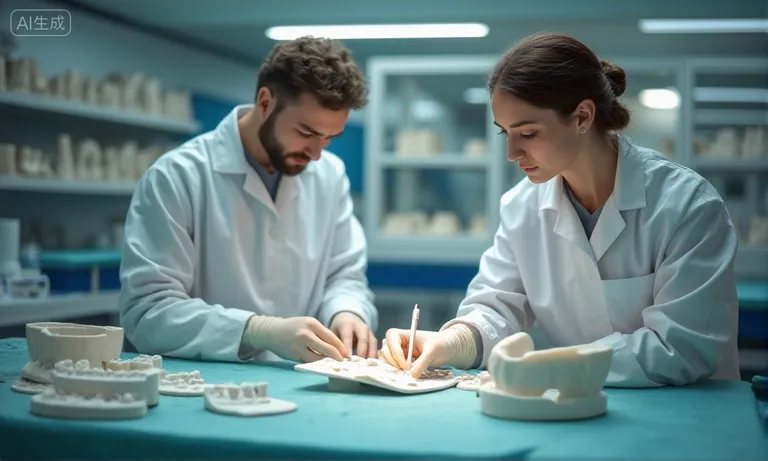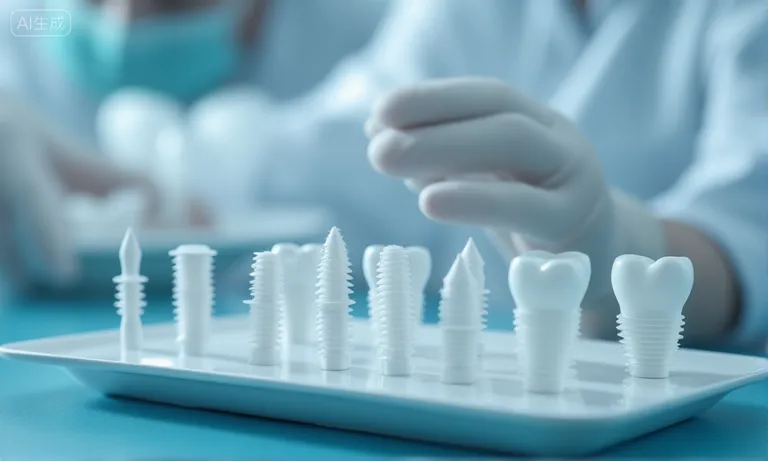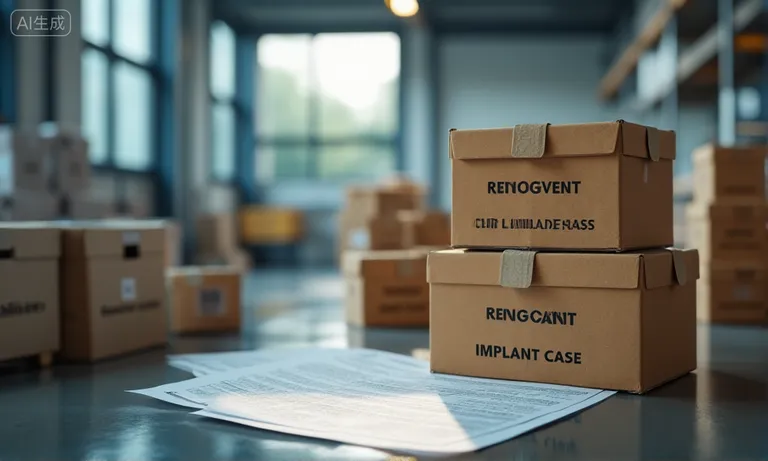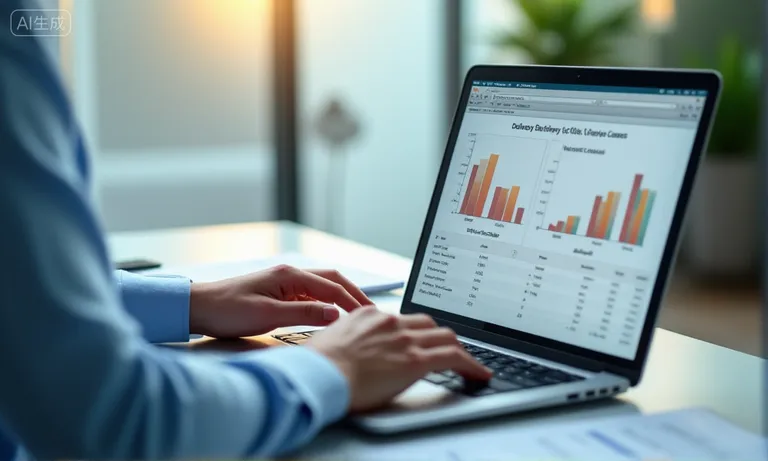Implant restorations often take longer than planned and can vary in quality, especially when traditional workflows rely on manual impressions, multiple hand-offs, and analog models. These bottlenecks increase delays and raise remake risks, making turnaround times unpredictable for clinics and procurement managers.
Digital workflows with 3D printing address these challenges by enabling direct integration of intraoral scans, automated design steps, and more consistent restorations. While external factors such as shipping, lab capacity, and file accuracy still influence delivery times, the overall process becomes faster and more reliable.
For buyers, evaluating a dental lab’s reliability means looking at measurable indicators—such as on-time delivery rates, remake percentages, and transparent turnaround commitments. By selecting partners that combine advanced digital workflows with proven operational discipline, procurement teams can shorten case timelines, reduce risks, and build long-term confidence in outsourced implant restorations.
What Traditional Factors Slow Down Turnaround in Dental Implant Restorations?
Delays in dental implant restorations are most often caused by manual processes, fragmented lab hand-offs, and high remake rates that disrupt schedules. Understanding these traditional bottlenecks is the first step for buyers and clinics aiming to improve efficiency and reliability in their supply chain.

Dental-Implant-Workflow-Manual-Delays
Manual dental impressions and stone models causing delays
Traditional implant cases often rely on physical impressions and stone models, which require shipping, pouring, and drying time. Each of these steps can add days to the timeline, and errors such as bubbles or distortions frequently lead to repeat impressions. Compared with digital scans, this manual step introduces uncertainty and can result in significant patient rescheduling.
Multiple lab hand-offs during implant restoration design and production
In many cases, a single restoration passes through multiple technicians—one for model work, another for design, and yet another for metal framework or ceramic layering. Each hand-off increases the risk of miscommunication and adds waiting time between tasks. For clinics ordering from overseas labs, these layers of internal transfers can double turnaround compared to integrated digital workflows.
High remake rates in conventional dental workflows
Without digital precision, implant restorations can suffer from misfit margins or occlusal errors, leading to remakes. Remakes not only increase costs but also disrupt agreed timelines. Some clinics report remake rates above 10% when using entirely conventional workflows. For buyers evaluating dental labs, it is important to ask about remake statistics as a reflection of both quality and consistency.
When viewed from the perspective of an overseas dental lab, these traditional bottlenecks explain why turnaround in implant restorations has historically been unpredictable. Identifying and reducing these factors is what makes the shift toward digital workflows so valuable for clinics and procurement managers.
How Does a Digital Dental Workflow with 3D Printing Accelerate Implant Restorations?
Digital workflows with 3D printing accelerate implant restorations by eliminating shipping delays, reducing manual steps, and enabling faster, more predictable case completion. Clinics that adopt this model often see turnaround times shrink from weeks to just a few days, especially when working with overseas dental labs that integrate scanning, design, and production in one workflow.
Direct integration from intraoral scans and STL files into the dental lab workflow
Instead of sending stone models, clinics now transmit intraoral scans or STL files directly to the lab. This removes courier delays and allows technicians to begin designing immediately. The result is fewer waiting days, no risk of broken models in transit, and a cleaner starting point for precision implant restorations.
Faster production of implant models, surgical guides, and provisional restorations
3D printing enables quick fabrication of several critical components:
- Implant models for accurate fitting checks
- Surgical guides that streamline chairside procedures
- Provisional crowns or bridges that reduce patient waiting
By printing these in-house or through a digital lab partner, clinics compress multiple weeks of production into a matter of hours or days.
Automation in CAD/CAM reducing manual adjustments and review cycles
With CAD/CAM integration, technicians use automated margin detection, library-based abutment design, and pre-set parameters for occlusion. A typical sequence involves:
- Importing scan data into CAD software
- Automated design adjustments based on implant libraries
- Generating a ready-to-print file without multiple review cycles
Each automated step reduces the back-and-forth that often slows down conventional workflows.
When viewed from the experience of a global dental lab, digital workflows powered by 3D printing not only reduce turnaround but also minimize the risks of lost time through errors or shipping delays. For clinics and procurement managers, this shift represents a practical way to achieve reliable delivery windows and higher patient satisfaction.
Why Is 3D Printing More Consistent for Dental Implant Restorations?
3D printing delivers greater consistency in dental implant restorations by reducing impression errors, ensuring repeatable output from digital files, and providing more predictable fits for complex cases such as crowns, bridges, and full-arch restorations. This makes it a preferred option for buyers seeking stability and lower remake rates.

Dental-Implant-3D-Printing-Consistency
Eliminating errors from physical impressions in implant cases
Traditional implant restorations often fail because of small distortions in impression material or stone model expansion. With digital scans and 3D printing, these variables disappear. Each implant’s position and angulation are captured digitally, then reproduced directly in the model. This eliminates the guesswork and significantly lowers remake frequency for implant-supported restorations.
Repeatable quality for multiple implant restorations from digital files
Once a scan is captured and saved, it can be reproduced consistently:
- Identical implant models can be reprinted without variation
- Surgical guides maintain exact alignment each time
- Full-arch cases can be segmented and replicated for verification
This repeatability means that even when cases are reordered or duplicated for multiple clinics, the output remains stable and uniform.
More predictable fit for crowns, bridges, and full-arch restorations
A clinic in Sydney once struggled with a full-arch implant restoration that had already failed twice when made with traditional impressions. Each time, slight distortions in the stone models led to misfitting bridges, forcing the dentist to recall the patient and restart the process. When the case was transferred to our lab, we worked directly from their intraoral scans, designing the restoration digitally and printing the working models in-house. The final bridge seated smoothly on the first try, cutting the total turnaround from nearly two months of repeated attempts down to just under three weeks. For other buyers managing complex implant cases, this experience shows how digital files and 3D printing can transform consistency—reducing remakes, saving chair time, and giving patients greater confidence in treatment outcomes.
From the perspective of a global dental lab, this level of reproducibility is what differentiates digital implant workflows. It not only improves quality but also gives procurement managers confidence that their restorations will be delivered consistently, even across large case volumes.
What External Factors Still Affect Delivery Times in Outsourced Dental Lab Work?
Even with digital workflows and 3D printing, external factors such as shipping, production capacity, and the quality of submitted files continue to influence delivery times. Buyers who rely on outsourced dental lab work need to account for these realities when evaluating turnaround commitments.

Dental-Lab-Logistics-Cross-Border
Shipping and cross-border logistics in implant restoration outsourcing
No matter how fast the production process is, international shipping and customs clearance can still create delays. Packages may be held up due to import regulations, weather disruptions, or holiday peak periods. Clinics working with overseas partners should factor in both courier transit time and potential border inspections when planning treatment schedules.
Lab capacity and printer availability during peak case volumes
Production timelines are also affected by the lab’s internal capacity.
- Printer utilization rates can spike during peak volumes
- Technicians may be stretched across multiple urgent cases
- Certain materials or resins may run low, creating bottlenecks
These variables mean that even digital labs must carefully manage workflow allocation to avoid backlogs.
Accuracy of digital files submitted by dental clinics or partner labs
Even the best technology cannot compensate for inaccurate data. A missing margin line, incorrect implant library, or incomplete STL file forces a case back to the clinic for corrections. A typical prevention process involves:
- Running a file validation check before design starts
- Flagging missing or unclear data to the clinic immediately
- Pausing production until revised files are received
Each re-submission adds time, but labs that maintain strict quality checks protect clinics from more costly remakes later.
From the perspective of an overseas dental lab, these external factors are daily operational challenges. While digital workflows reduce internal inefficiencies, managing logistics, capacity, and file accuracy requires transparent communication and reliable coordination. For procurement managers, awareness of these variables is key to setting realistic expectations and building trust with global partners such as Raytops Dental Lab.
How Can Buyers Evaluate a Dental Lab’s Delivery Reliability?
Evaluating a dental lab’s delivery reliability requires looking beyond marketing promises and focusing on measurable data, workflow compatibility, and transparency in turnaround commitments. Procurement managers who apply these checks can better identify trustworthy partners for implant restoration outsourcing.

Dental-Lab-Delivery-Reliability-Evaluation
Reviewing on-time delivery performance and remake statistics for implant restorations
A reliable lab will not only share average turnaround times but also provide data on on-time delivery rates and remake percentages. For example, knowing whether a lab maintains 95% or higher on-time completion, or keeps remakes under 3%, helps buyers separate consistent suppliers from those with unstable processes. These statistics are particularly important for high-volume implant restoration programs, where even a small delay can disrupt clinic scheduling.
Checking digital file compatibility and CAD/CAM workflow integration
Compatibility issues often cause hidden delays. Buyers should confirm that the lab’s systems accept the same STL file formats, implant libraries, and design software used in their clinics or partner labs.
- Does the lab handle multiple scanner brands?
- Are CAD libraries up to date with current implant systems?
- Can the lab’s CAM processes integrate seamlessly with submitted designs?
A lab that demonstrates broad compatibility not only reduces technical interruptions but also signals digital maturity in its workflow.
Looking for transparent turnaround commitments in dental lab quotations
One European distributor shared that during their initial cooperation with an overseas lab, turnaround times often slipped without clear explanation. After switching to a partner that included transparent case-by-case timelines in its quotations, they gained greater predictability. In one implant bridge project, the quotation clearly stated a 7-day design and 3-day shipping window, which the lab consistently met. This gave the distributor confidence to scale orders, knowing patients would not face unexpected delays. For buyers, such transparency is a strong indicator of delivery reliability, as it reflects both confidence in internal workflow and respect for the client’s scheduling needs.
From the perspective of global dental labs like Raytops Dental Lab, providing accurate delivery data and honoring stated timelines is fundamental to building long-term trust. Buyers who assess reliability through performance metrics, compatibility checks, and clear turnaround commitments can reduce risks and select partners that align with their operational goals.
Conclusion
3D printing has redefined how dental implant restorations are produced, delivering faster turnaround times and more consistent results compared to traditional workflows. Yet true reliability comes not only from technology but also from managing logistics, capacity, and clear communication. For buyers, the key is choosing partners who combine digital expertise with transparent processes. As an overseas dental lab, Raytops Dental Lab supports clinics, distributors, and DSOs worldwide by aligning advanced production with dependable delivery, helping procurement teams reduce risks and ensure predictable outcomes for patients.


